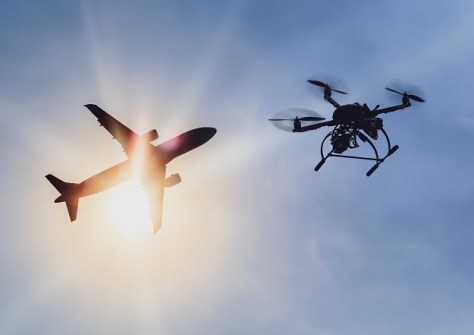
CASA has introduced a new beyond visual line-of-sight (BVLOS) outside of controlled airspace (OCTA) exam for remote pilots.
The Agency says the exam is an alternate pathway to sitting the Instrument Rating Exam (IREX), for remote pilot licence (RePL) holders intending to fly BVLOS OCTA.
The requirements and details for the new BVLOS exam are:
- You must have a RePL
- The cost is $166.79 per exam, made up of a $96.79 examiner fee and $70 CASA regulatory fee
- The duration is 90 minutes
- There are no permitted materials — all information is provided to candidates digitally
- The pass mark is 70%
CASA points out that RePL holders who intend to undertake BVLOS operations must operate under a remotely piloted aircraft operator’s certificate (ReOC) holder with a flight authorisation to conduct BVLOS operations.
In addition, RePL holders who intend to undertake BVLOS operations in controlled airspace will still need to pass the IREX exam.
RePL holders will need to provide a copy of their exam results to the ReOC holder, and ReOC holders are required to ensure remote pilots have successfully passed the exam and are proficient in accordance with the approved documented practices and procedures.
CASA has produced RPAS BVLOS OCTA – Aeronautical Knowledge Standards and a Standards Guide (PDF) to assist training organisations develop their own training material.
Information on locations and exam booking times can be found on the Aspeq website. There’s also a recent webinar that explains the ins and outs of the BVLOS exam.
In other news, CASA has updated its sample operations manual for ReOC holders and also produced a guide to the manual.
Key changes in the updated manual include:
- clarification on significant and non-significant changes, including what changes don’t need CASA approval
- no longer needing to include RPA serial numbers
- no longer needing to complete a job safety assessment (JSA) for low-risk operations
- amendments to make it easier for operators to meet record keeping requirements.
In a statement published on its website, CASA says that “We’ve collaborated with the Australian Association for Uncrewed Systems (AAUS) and the Association for Australian Certified UAV Operators (ACUO) on the updated manual designed to allow operators to take greater accountability of their procedures.”
“The updated manual will make it easier for new entrants to comply with regulatory requirements while providing a framework when planning to undertake complex operations. We have also released a guide to the sample manual which includes sample procedures for operations.
“Existing ReOC holders can choose to update their operations manual to align with the new sample procedures or continue operating based on the procedures outlined in their existing operations manual.”
In other drone-related news, the Department of Infrastructure, Transport, Regional Development, Communications and the Arts (DITRDCA) has released two consultations for public feedback, regarding Remote ID and Privacy Guidelines.
According to the Department, “Remote Identification (Remote ID or RID) is a technology incorporated into drones that, when used with suitable ground equipment, can provide information about who is operating a drone and where they’re flying, enabling accountability for their actions.”
“Better information about where drones are operating will be fundamental to the safe and efficient operation of drones and will support future drone traffic management systems. This will help the integration of emerging technologies with traditional aircraft systems as well as supporting safe, economic, and efficient management for the future of Australian airspace.”
The Department has released a discussion paper for public consultation, being the first step towards a potential mandate for drones to carry Remote ID. The paper:
- identifies opportunities and risks associated with this technology
- outlines options for how Remote ID could be mandated in Australia
- seeks feedback to inform detailed options for enabling legislation and/or regulation.
This consultation process is a starting point for ongoing discussions and collaboration between government, industry, and the broader community to ensure that deployment of Remote ID in Australia is fit-for-purpose and meets our needs.
Finally, DITRDCA has issued draft Drone Privacy Guidelines, which seek to “provide drone users with a set of easy to follow principles to enable them to operate drones in line with privacy expectations”.












